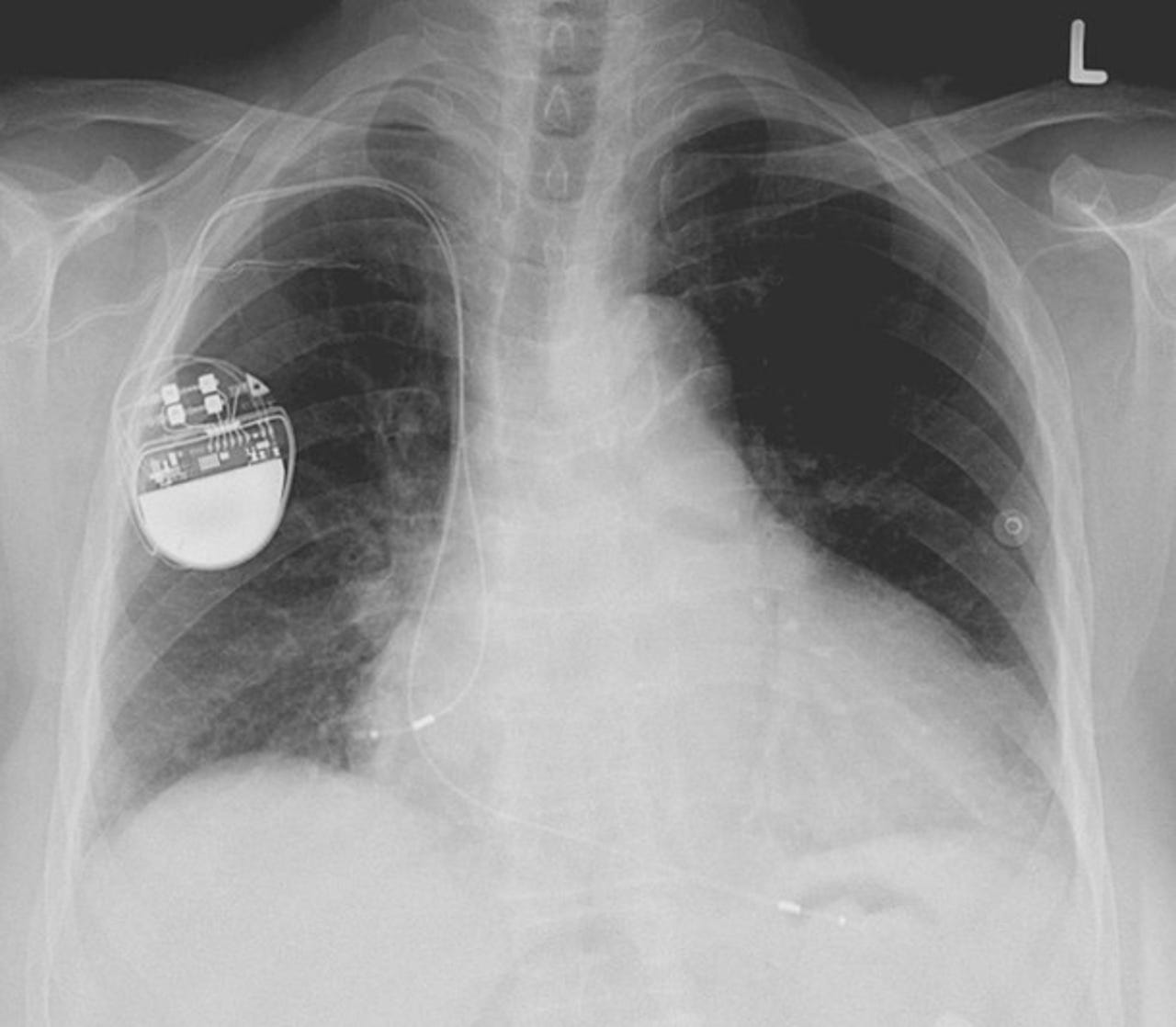Your life in IT's hands


Pacemaker
IT is used to run many of the critical systems that keep transport flowing and people breathing. ZDNet UK takes a tour of technology that helps keep people alive.
Pictured is a pacemaker, which delivers a regular electrical charge to the heart to keep it pumping. The pacemaker stands in for the human heart's own ability to regulate its beats through chemical impulses.
daVinci Si surgical system
Devices like the da Vinci Si surgical system, pictured, allow doctors to operate on a patient from a remote location. Launched in April 2009, the system enables two surgeons to collaborate during a procedure by using remote consoles to manipulate the four robotic arms of the operating machine.
Met office supercomputer
Supercomputers can be used to deal with a range of computational problems. This one, from IBM, is used to run weather prediction software. Pictured is the IBM Power-6 based supercomputer employed by the UK Met Office to run standard weather forecasts, climate prediction and global wind modelling.
The computer's forecasts are designed to help aircraft optimise their routes. The system is capable of 125 teraflops per second and consumes 1.2MW of power per year. Data from the supercomputer is backed up to 12 petabytes of tape storage. Data from the Met Office is used by a variety of government agencies. The Highways Agency, for example, uses the data for its own road warning systems.
GPS Receiver
The Global Positioning System (GPS) plots the location of objects on the Earth's surface. GPS uses a constellation of at least 24 US satellites to precisely triangulate a device by using the intersecting signals from four separate satellites. The GPS cluster is administered by the US Air Force. Competing systems include the Russian Glonass and European Galileo projects. GPS is used as a navigational aid around the world.
Accelerometer
Accelerometers are used to gauge the acceleration of objects and are a critical aspect of automated braking systems in modern cars. They are also used to protect hard drives, as they can sense if it has been dropped and retract the read/write head to prevent excessive damage to the disk.
Accelerometers typically use a combination of a spring and a weight, so if an object goes into freefall, pressure is exerted on the spring, which then feeds information back to the relevant IT system.
Variable-Message Sign
Variable Message Signs are used across the world to give critical information to drivers. This sign, from Interstate 94 in Saint Paul, Minnesota is advising drivers of a road blockage in a storm.
Highways Agency control
Control rooms like this, operated by the Highways Agency, are used to disseminate messages back to Variable Message Signs (previous page).
TrackerNet
TrackerNet is a system used by the London Underground to keep track of its trains. Pictured is TrackerNet within the London Underground's network operations centre. This software was used in the aftermath of the 7 July bombings to gain an understanding of where underground trains stopped at the time of the event. In 2005 the software was deployed only to the Circle Line but, since then, has been spread to all other London Underground lines.
Air Traffic Control
Air Traffic Control uses a variety of systems to give controllers an awareness of planes in the sky and on the ground. Pictured is an Airport Surface Detection Equipment Model X Display (ASDE-X), which is used to give controllers an understanding of where planes are on the airport runway. ASDE-X systems can gather information from vehicles' transponders (part of the radio equipment) to give Air Traffic Control a fuller understanding of the types of vehicles on the runway.
One of the key jobs of the ASDE-X is to prevent collisions on airport runways, according to the Federal Aviation Administration (FAA). Data for the ASDE-X is culled from radar located on the air traffic control tower, sensors across the airport and the automation system for the whole terminal, according to the FAA.
Siemens WinCC Scada
Siemens WinCC Scada systems, like the one pictured, are used to run some of the critical infrastructure of manufacturing centres, power plants and energy grids. Recently, Scada systems were targeted by the Stuxnet virus. In September, officials of the Iranian Bushehr Nuclear Power Plant said that a Stuxnet infection had affected their plant.